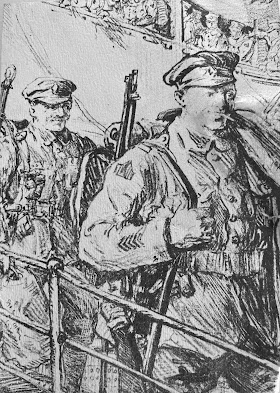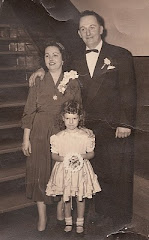 Frank Hauck and Graham Naylor in Rimburg.
Frank Hauck and Graham Naylor in Rimburg.
November 9 left for Germany Rimburg [area by Rimburg Castle north of Aachen]. Set up loft on roof for our flying pigeons. Had Germans throw shell at us while hijacking their pigeons. Buzz bombs are going over quite frequently.
Found a place where people were very friendly so we took 2 rooms on second floor of house. Set up our lofts and put one on small roof outside our window. Front only 3/4 mile away as the crow flies. Started training birds immediately. Found a loft nearby and tried to get these birds but was observed by enemy and got shelled.
November 14, 1944
Sect. 1A moved into Ubach Nov. 14 and set up. We now have city hall near us again. There are a lot of 88's coming over early every morning.
[NOTE: The three sections of the 278th operated in Rimburg, Ubach, and Gilenkirchen, Germany. The 88's were German artillery guns but had orinally been designed for anti-aircraft.]
November 23, 1944
Baisweiler was taken yesterday so today we went up and found us a hog for our Thanksgiving dinner. 10-1's get very tiresome after eating them day in and day out. We shot the hog in its pen, loaded him in one of our jeeps and took him back to where we cleaned him up and got him ready for the pot. Rita and her mother cooked up a real spread for us including 3 bottles of wine which helped out a lot as it made it more like home. Buzz bombs are starting to come over this area, can seethem taking off fropm a spot over the Roer River as they have a white vapor trail as they go up. Dive bomber overhead while we are eating dropped one and got 3 fellows in a chow line 1/2 mile down the road. Message came in today about a line being knocked out. Got it to the Message Center within 16 minutes of release. Met some of the boys that we came over on the boat with. They have a cut field down the road from us. They take our birds up to the front with them and release them on training tosses. Air strafing is going on a lot now especially at night, lots of shelling and flares being dropped.
Heinies come over every night now on recon. The A.A. sure puts up a great show. Quite a few flares are being dropped to find our artillery.
December 25, 1944
Christmas is here again today, things are fairly quiet. Almost got it tonight when Graham Naylor and I went up to Jake's and a large shell came in and hit about 50 feet from me as I was getting out of jeep. Was covered with a lot of dirt but came out O.K.
Battle of the Bulge is on and our front line at Linnich is very thin. A lot of Air Activity going on every day. Kelley, Schultz and I went for a trailer load of coal today and was caught in a barrage as were souvenir hunting in a house in Sigguath [spelling?] near Gelsenkirchen [Gilenkirchen]. Got out lucky as 5 shells hit all around us and brought down many a house. One shell went through church steeple 1/2 block away. Paratroopers are now being dropped every nite. Caught 3 spies at the bridge this afternoon -- passing as Hollanders. M.P's were on the ball. Was going by just as their car came along.
They got two paratroopers today, one was driving a 6 x 6 and the other directing traffic in Heuclin [spelling ?]. They sure have nerve.
January 1, 1945
New Years is due again. Had a little party down the street and had a good time. Lomchester shot down at 11:00 P.M. by the Luftwaffe. Next morning was a real field day. the jerries are over like flies and plenty are falling. Adams got one coming over the castle and sure poured the lead into him. Saw 4 of our P47's chase a jerry down the valley today but couldn't shoot him down because too many troops in the area. Got him further down the line.
A P-61 Black Widow got a JU88 tonight it hit a house squarely and killed 4 people sleeping inside. The 29 division shot down a jerry also, he parachuted down but a jig shot him while he was on his way down. Starting to get snow now and it's getting colder and muddier.
Went to eat at the 102 Inf. today and had the Luft strafe our chow line. Rosie and Buck almost got it today, a jerry shot part of a cub's wing off and was coming in for the kill and they were right in the line of fire. Luckily a P-47 came in time.
What a spot for a movie camera.
The 278 Signal Pigeon Company was credited of shooting down a Focke Wulf 190 on January 1st 1945 near Chaleon Castle, Holland.
Sapienza on anti-aircraft gun from Sapienza photos.



































